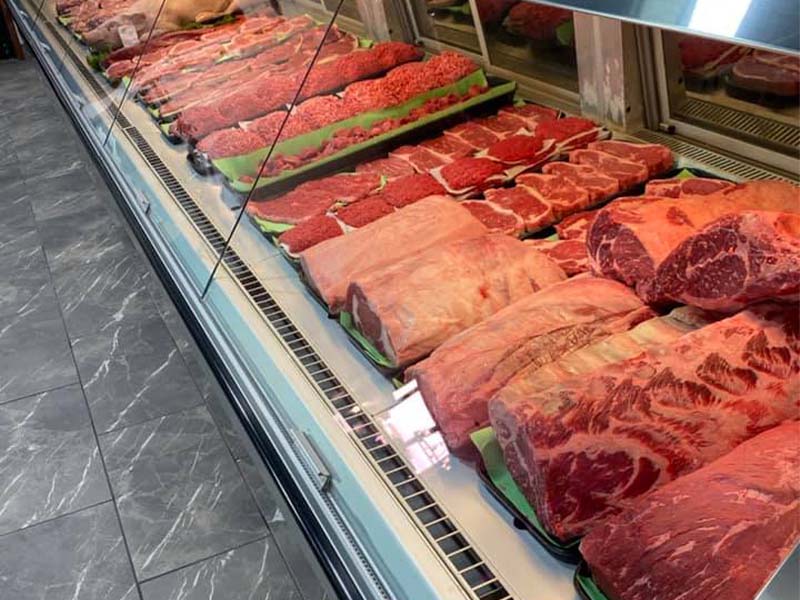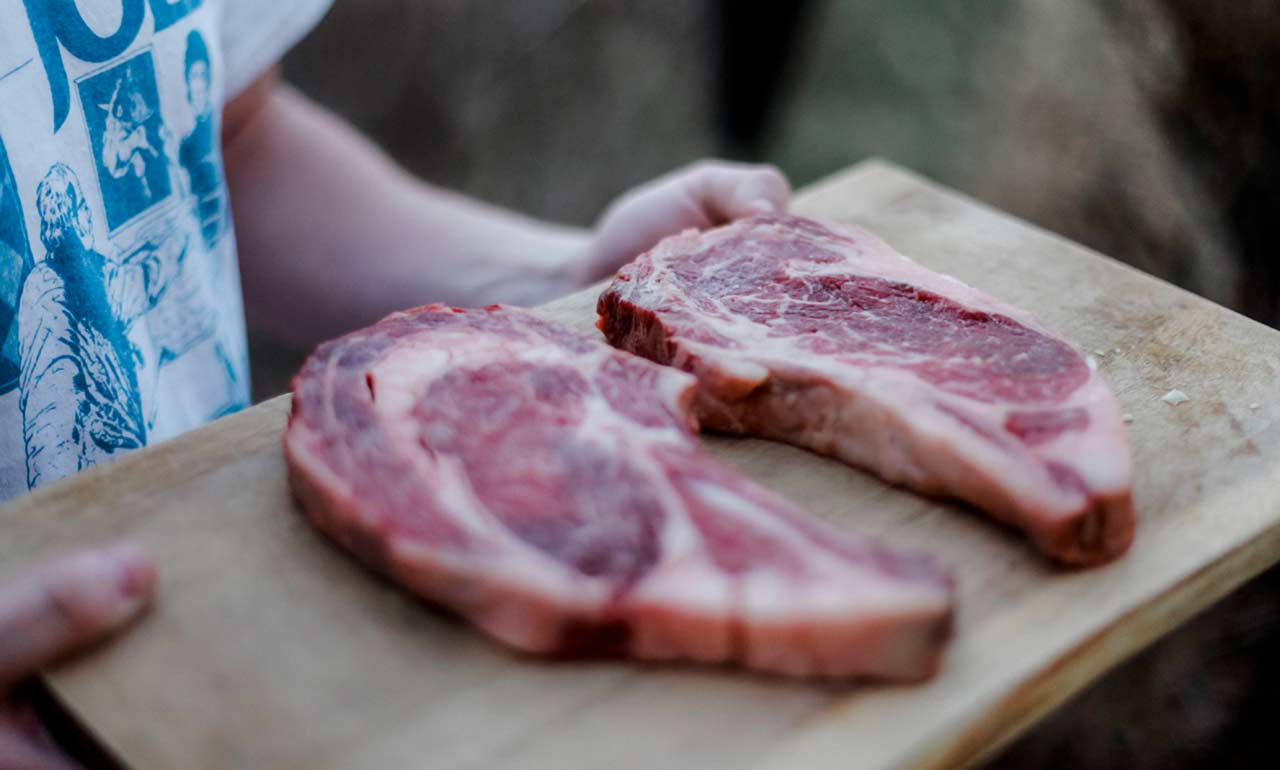Why Bagley Farms Meat Market Edwardsville IL Is the most effective Selection for High Quality Meats
Why Bagley Farms Meat Market Edwardsville IL Is the most effective Selection for High Quality Meats
Blog Article
Reveal the Art of the Butcher's Cut in a Modern Meat Market
In the ever-evolving landscape of modern-day meat markets, the butcher's cut has actually transcended its standard roots, merging old-time workmanship with contemporary techniques. bagley farms meat market edwardsville il. Today's butchers are not simply processors of meat; they are well-informed artisans who emphasize sustainability and ethical sourcing. Their knowledge in selecting and preparing cuts tailored to details cooking requirements offers an exceptional dining experience. Yet, what absolutely establishes the modern butcher apart is their capacity to create a deeper link between customers and the beginnings of their meat. Exactly how do these masters balance custom with advancement, and what implications does this have for the future of meat usage?
Evolution of Butchery Strategies

The mid-20th century saw butchery methods additionally fine-tuned by scientific understandings right into muscle mass biology and meat aging, improving both tenderness and preference. Advancements like vacuum packaging and refrigeration expanded item shelf-life, enabling butchers to branch out offerings and improve quality control. This duration likewise marked the surge of specific equipment, such as band saws and meat slicers, which raised accuracy and effectiveness in meat handling.
The 21st century has actually introduced electronic innovation into the butchery world. Computerized systems currently help in tracking pet provenance and optimizing cuts to fulfill particular customer choices. Additionally, a rebirth in artisanal butchery has arised, blending typical skills with modern-day understanding to provide to consumers looking for ethical and lasting meat options. This development underscores a dynamic interplay in between tradition and technology, meeting modern demands while protecting the craft's heritage.

Recognizing Meat Cuts

Understanding the complexities of meat cuts is crucial for both butchers and customers looking for top quality and worth. Each cut comes from a different component of the pet, passing on distinct flavors, textures, and food preparation techniques. Mastery of these differences not just improves culinary experiences yet additionally makes best use of the energy of each carcass. For butchers, exact cuts reflect ability and regard for the craft, guaranteeing minimal waste and optimum yield.
The main groups of meat cuts include primitive, sub-primal, and retail cuts. Primal cuts, such as the loin, rib, and chuck, are the huge sections initially separated from the carcass. Butchers then damage these down additionally right into sub-primal cuts, before finally generating retail cuts offered to consumers, like ribeye or tenderloin. Each phase requires cautious interest to anatomical structure and muscular tissue structure.
Understanding muscle mass make-up is vital; muscles utilized a lot more frequently by the animal have a tendency to be harder and are best suited for sluggish food preparation approaches, while less-used muscles, like those discovered in the loin, are extra tender and ideal for barbecuing or roasting. Familiarity with these differences empowers customers to make enlightened choices, improving their cooking undertakings.
Selecting Quality Meat
Choosing the best meat involves even more than simply choosing an aesthetically enticing item from the display screen. The art of picking top quality meat needs a discerning eye and understanding of particular characteristics that symbolize quality and excellence. Pay focus Homepage to the color; beef must have a brilliant, cherry-red shade, while lamb should show a soft pink tone, and pork a light pink. This suggests the meat is fresh and hasn't been exposed to oxygen for also lengthy.
Second of all, consider the marbling, which refers to the white flecks of fat within the muscular tissue. Proper marbling is a key sign of tenderness and flavor, as it thaws during food preparation, enhancing the meat's juiciness. Keep in mind, greater marbling commonly correlates with premium quality cuts, such as USDA Prime.
Structure is one more vital aspect; meat must feel firm to the touch, not slimed or excessively soft. In addition, bear in mind the scent. Fresh meat should have a tidy, neutral scent, devoid of any kind of sour or repulsive odors.
Combining Cuts With Cooking Approaches
Successfully combining cuts of meat with the proper cooking methods is important for achieving optimum flavor and structure. Different cuts differ in tenderness, marbling, and connective cells material, each needing details methods to unlock their possibility. For example, tender cuts like filet mignon and ribeye, with their intrinsic marbling, benefit from high-heat, quick-cooking methods such as barbecuing or pan-searing. These techniques improve the meat's all-natural tastes and ensure a juicy surface.
On the other hand, harder cuts like brisket and chuck roast are rich in collagen, which breaks down right into gelatin when cooked slowly. These cuts are excellent for braising or sluggish roasting, permitting the meat to tenderize in time and establish deep, intricate flavors. In a similar way, cuts such as short ribs and pork shoulder fare well with slow-cooking approaches, where extended cooking times change their robust structures right into succulent recipes.
Lamb shanks and oxtail, which need extended food preparation to soften, are ideal candidates for stewing or sluggish simmering. These methods coax out rich, passionate flavors while preserving dampness. By understanding the one-of-a-kind attributes of each cut, chefs and home cooks alike can elevate their cooking creations, guaranteeing each meal is both pleasing and memorable.
The Butcher's Role Today
Browsing the evolving landscape of the modern-day meat market, the butcher's duty today browse this site extends beyond simple preparation of cuts. Contemporary butchers are cooking craftsmens, educators, and supporters Visit Website for sustainable practices.
Along with crafting exact cuts, butchers now engage directly with customers, providing cooking advice and customizing choices to match private demands and choices. Their knowledge in meat aging, marbling, and flavor profiles equips customers to make enlightened choices, enhancing their culinary experiences. This individualized solution exemplifies the butcher's developing duty as a relied on consultant in the kitchen area.
Additionally, butchers are essential in lessening waste, using whole animals to produce diverse items such as sausages and supplies - bagley farms meat market edwardsville il. This thorough strategy not just respects the pet however also aligns with contemporary sustainability objectives. This way, the modern butcher embodies both practice and development, adapting to an ever-changing market while protecting the creativity and honesty of their craft

Conclusion
Proficiency in comprehending varied meat cuts and quality signs encourages butchers to give enlightened referrals, lining up details cuts with optimal food preparation approaches. By honoring historical techniques while welcoming contemporary demands, the butcher's role remains important in today's innovative meat market.
Report this page